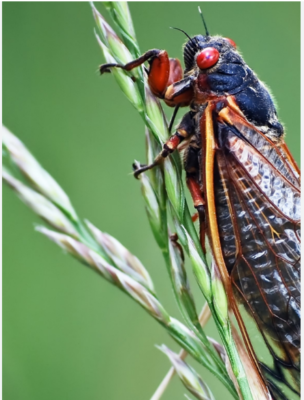Unraveling the Phenomenon of 17-Year Cicadas
When the buzz of cicadas fills the air, it’s not just background noise; it’s a testament to the fascinating phenomenon of periodical cicadas. Among them, the 17-year cicadas stand out with their remarkable life cycle, one that has intrigued scientists and nature enthusiasts alike. In this exploration, we delve into the intricacies of why these insects choose to surface only once every 17 years.
The Longest Known Insect Life Cycle
Periodical cicadas, known scientifically as homopterans, boast the longest insect life cycle documented to date. Among them, the 17-year cicadas comprise the largest brood, making their appearance in the northeastern quarter of the United States every 17 years, like clockwork. This extended life cycle, contrary to conventional wisdom, is not spent in hibernation but in a unique and purposeful underground existence.
A 17-Year Subterranean Journey
The life of a 17-year cicada begins when a nymph hatches from its egg and promptly burrows into the ground. For the next 17 years, it resides beneath the earth’s surface, undertaking a mysterious subterranean journey. Unlike the popular misconception of hibernation, these nymphs remain active and conscious in their wingless forms, engaging in tunnel excavation and feeding on tree roots’ sap.
Brief Emergence for a Transient Purpose
After completing its 17-year subterranean odyssey, the 17-year cicada emerges from the ground for a fleeting period. This emergence marks a critical phase in its life cycle, lasting only four to six weeks. Within this short timeframe, the cicada’s primary objectives are to mate, fertilize or lay eggs, and initiate the next cycle. The brevity of their aboveground existence adds an element of urgency to their activities, highlighting the efficiency of nature’s design.
Debunking Misconceptions about Periodical Cicadas
It’s essential to dispel some common misconceptions surrounding periodical cicadas. Contrary to belief, these insects aren’t dormant or inactive during their extended underground sojourn. Understanding their continuous activity during this period sheds light on the intricate dynamics of their life cycle.
Active Nymphs in Subterranean Tunnels
While residing below ground, periodical cicada nymphs remain conscious and active. They dedicate their time to excavating tunnels, creating intricate networks beneath the earth’s surface. This activity not only provides them with shelter but also serves as a means of sustenance as they feed on the sap from tree roots.
Purposeful Feeding and Tunneling
The dual purpose of feeding on sap and tunnel excavation serves as a testament to the resourcefulness of 17-year cicadas. By tapping into the nutrient-rich sap of tree roots, these nymphs ensure their sustenance throughout the prolonged subterranean phase. Simultaneously, the intricate tunneling provides them with shelter and protection from predators, creating a finely tuned ecosystem beneath the surface.
Conscious and Engaged: Dispelling Hibernation Myths
Contrary to the popular misconception of hibernation, periodical cicadas remain fully conscious and engaged during their time underground. The continuous activity, including feeding, tunneling, and growth, showcases a dynamic and purposeful phase of their life cycle. This newfound understanding challenges traditional views and deepens our appreciation for the complexity of nature’s mechanisms.
The Intricacies of Nature’s Clockwork
The precise timing of the 17-year cicadas’ emergence is a marvel of nature’s clockwork. Understanding the intricacies of this timing sheds light on the adaptability and evolutionary advantages that such a cyclical life cycle confers upon these remarkable insects.
Evolutionary Significance of a Prolonged Life Cycle
The 17-year life cycle of cicadas is not a random occurrence but an outcome of millions of years of evolution. This extended period below ground allows them to synchronize their emergence, overwhelming predators with sheer numbers. The evolutionary significance lies in the survival advantage conferred by this synchronized strategy, ensuring the perpetuation of their species.
Environmental Cues and Synchronization
Environmental cues play a pivotal role in orchestrating the synchronized emergence of 17-year cicadas. Factors such as temperature, soil conditions, and other environmental triggers act as signals for the cicadas to initiate their ascent. This finely tuned response to environmental cues highlights the adaptive nature of their life cycle, finely calibrated to the ecological nuances of their habitats.
A Brief Aboveground Symphony
The brevity of the 17-year cicadas’ aboveground existence may seem enigmatic, but it serves a crucial purpose. The short-lived emergence allows them to capitalize on the synchronized mating opportunities, ensuring the maximum likelihood of successful reproduction. This strategic approach aligns with the evolutionary imperative of perpetuating their lineage efficiently.
Nature’s Unveiling Secrets
Read More:
Dr. Martin Luther King Jr.: An Inspiring Hero – 2024 Celebration in Ohio
Embracing the Slow Life A Cultural Shift Towards Mindful Living in America
In the symphony of nature, the 17-year cicadas play a unique and harmonious tune, revealing the intricacies of a life cycle that has stood the test of time. Dispelling myths, understanding their purposeful underground activity, and appreciating the evolutionary advantages of their extended life cycle offer a glimpse into the wonders of nature’s mysteries. As these cyclical creatures resurface, they not only contribute to the ecological balance but also inspire awe and curiosity, inviting us to delve deeper into the secrets of the natural world.
